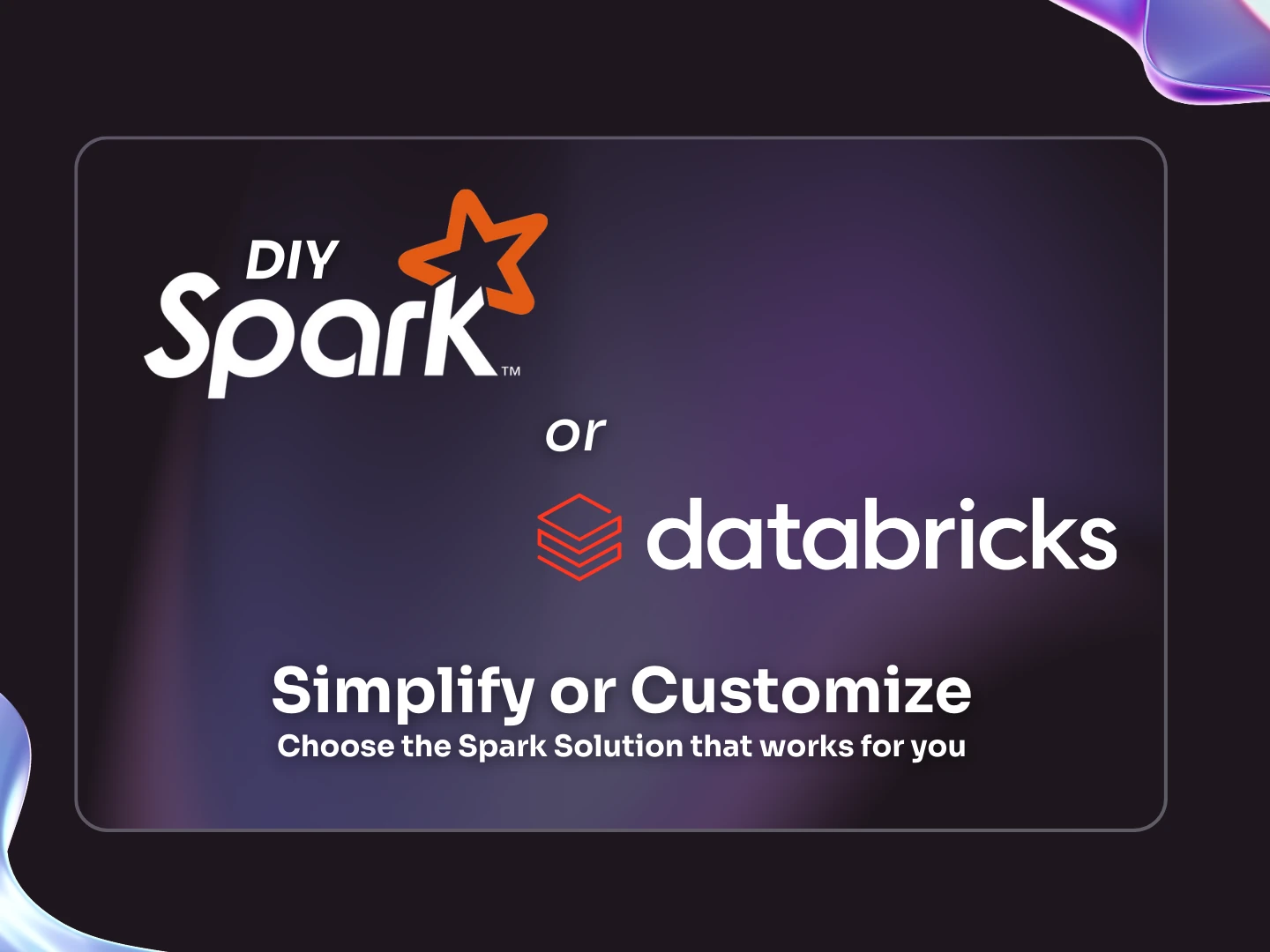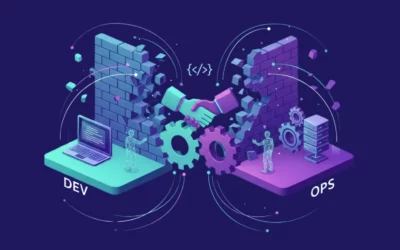When it comes to big data processing, Apache Spark is undoubtedly one of the most powerful tools available. Its ability to quickly process immense amounts of data and support various applications like machine learning, streaming, and batch processing has made it a top choice for businesses and engineers alike.
But here’s the catch, deploying and managing Apache Spark isn’t one-size-fits-all. You have two primary options to bring Spark into your workflows:
- Use Databricks, a fully managed service built on Spark.
- Roll up your sleeves and run Spark yourself, either on-premises or in the cloud.
Both approaches come with their own set of pros and cons, and the best option depends on your business needs, team expertise, and budget. This guide breaks down Databricks vs Apache Spark in the real world, helping you make the right decision.
What Is Apache Spark?
Apache Spark is an open-source distributed computing framework designed for fast data processing. It supports a wide range of big data operations, making it ideal for tasks like:
- ETL (Extract, Transform, Load): Cleaning and organizing data for analysis.
- Machine Learning: Training and testing models on large datasets using MLlib.
- Streaming Data: Processing continuous streams of data in real-time.
- Data Analytics: Running complex queries quickly and efficiently.
Its versatility has made Spark a favorite tool across industries such as finance, e-commerce, healthcare, and technology.
What Is Databricks?
Databricks is a managed Spark service designed to simplify big data processing. Created by the original developers of Apache Spark, Databricks offers everything you need to deploy and use Spark without the heavy lifting that comes with managing it yourself.
Key Features of Databricks:
- Interactive Notebooks: Perform data exploration, coding, and visualization collaboratively.
- Simplified Cluster Management: Spin up and manage Spark clusters with a few clicks.
- Native Cloud Integration: Seamless compatibility with AWS, Azure, and GCP.
- Built-in Tools: Includes ML flow for machine learning lifecycle management and Delta Lake for reliable data storage.
- Auto-scaling Clusters: Scale workloads dynamically without manual intervention.
Setting Up Apache Spark on Your Own
Prefer full control? You can run Spark manually on bare metal, in the cloud, or even via Spark on Kubernetes. But be warned: it’s not for the faint of heart.
Steps for DIY Spark Setup:
- Provision Infrastructure: Set up virtual machines, storage, and networking in your cloud environment, or configure on-premises hardware.
- Install Dependencies: Install Apache Spark, Hadoop (for HDFS storage), and Java.
- Configure Environment: Allocate resources, set environment variables, and enable fault tolerance features.
- Set Up a Cluster Manager: Choose between YARN, Mesos, or Kubernetes for cluster orchestration.
- Monitor and Maintain: Continuously monitor, scale, and troubleshoot the Spark environment.
While this setup can be customized down to the byte, it requires deep technical expertise and constant maintenance.
Databricks vs. DIY Spark Setup – A Detailed Comparison
1. Ease of Setup
- Databricks: Minimal setup is required. Pre-configured clusters mean you can get started within minutes without worrying about dependencies.
- DIY Spark: Requires manual configuration of clusters, including compatibility checks and dependency installation. Time-intensive and complex.
2. Scalability
- Databricks: Features automatic scaling to handle changing workloads. This makes scaling seamless, especially for dynamic data needs.
- DIY Spark: Requires manual effort to scale clusters by resizing infrastructure and updating configurations.
3. Performance Optimization
- Databricks: Includes tools like Photon and built-in query optimizations for better performance. You don’t need deep technical expertise to tune it.
- DIY Spark: You must manually fine-tune performance parameters, requiring an in-depth understanding of resource allocation and Spark internals.
4. Cost
- Databricks: Operates on a pay-as-you-go model, which includes compute hours, storage, and management fees. Higher operational costs but saves on labor.
- DIY Spark: Infrastructure costs are lower, but the human resource cost for setup and maintenance can add up quickly.
5. Security
- Databricks: Comes with enterprise-grade security features like role-based access control (RBAC) and audit logging. GDPR and SOC2 compliance are built-in.
- DIY Spark: Requires custom implementation of security measures. Achieving compliance involves significant effort.
6. Ecosystem and Data Integration
- Databricks: Offers native integration with tools like Delta Lake and MLflow. Perfect for collaborative and multipurpose environments.
- DIY Spark: You’ll need to manually integrate third-party tools, which can be time-consuming.
7. Maintenance
- Databricks: Fully managed by Databricks, so updates and patches are handled for you—no operational overhead.
- DIY Spark: You’re responsible for all updates, patches, and configuration changes.
When to Choose Databricks
Databricks is an excellent choice if:
- Speed and simplicity matter: Teams can avoid complex setups and immediately focus on data processing or analysis.
- You need collaboration: Built-in tools like interactive notebooks make working in teams seamless.
- Your workloads are dynamic: Auto-scaling ensures you can handle fluctuating data volumes efficiently.
- Security is critical: Enterprise-grade protection and compliance come standard.
- You prefer a complete ecosystem: Tools like Delta Lake and MLflow streamline workflows.
When to Choose DIY Spark
- You need complete control: Customizing every aspect of your setup is possible with DIY Spark.
- Costs are a concern: Initial infrastructure costs are typically lower than a managed service like Databricks.
- Your team has expertise: A skilled engineering team can maintain and optimize the Spark environment for your specific needs.
- You require a specialized setup: Unique configurations or custom environments benefit from full control.
Real-World Example
Case Study: E-commerce Data Analysis
Scenario: A mid-sized e-commerce company wants to analyze customer purchasing behavior.
- With Databricks: The company leverages built-in tools and auto-scaling to process clickstream data, reducing query execution time by 40%. Team collaboration using notebooks boosts productivity.
- With DIY Spark: A custom setup on AWS EC2 instances saves initial costs but requires significant time investment for configuration and scaling during peak shopping periods.
How to Decide
Choosing between Databricks and setting up Apache Spark yourself depends heavily on your organization’s priorities. If quick deployment, team collaboration, and scalability are crucial, Databricks is worth the investment. On the other hand, if cost control and full customization are your priorities, DIY Spark might fit the bill.
Final Thoughts
Whether leveraging the managed solutions of Databricks or using your own infrastructure, Apache Spark provides unparalleled power for big data processing. The key is to align your choice with your team’s capabilities, workload demands, and budget.
Not sure where to start? Explore trials of both options to see what works best for your organization. Experience the possibilities of Apache Spark today!




